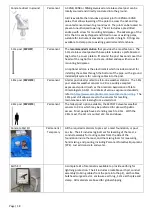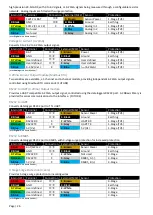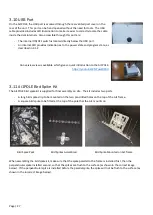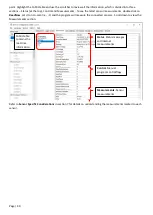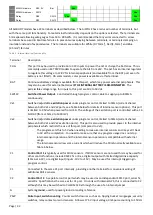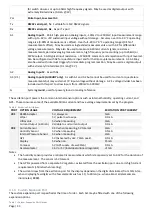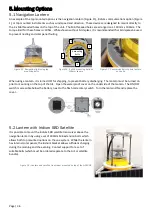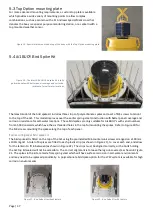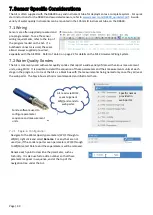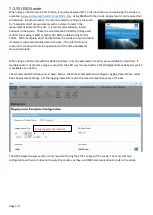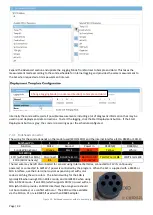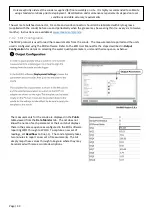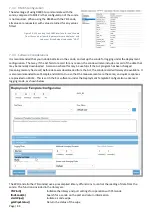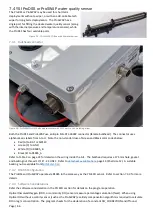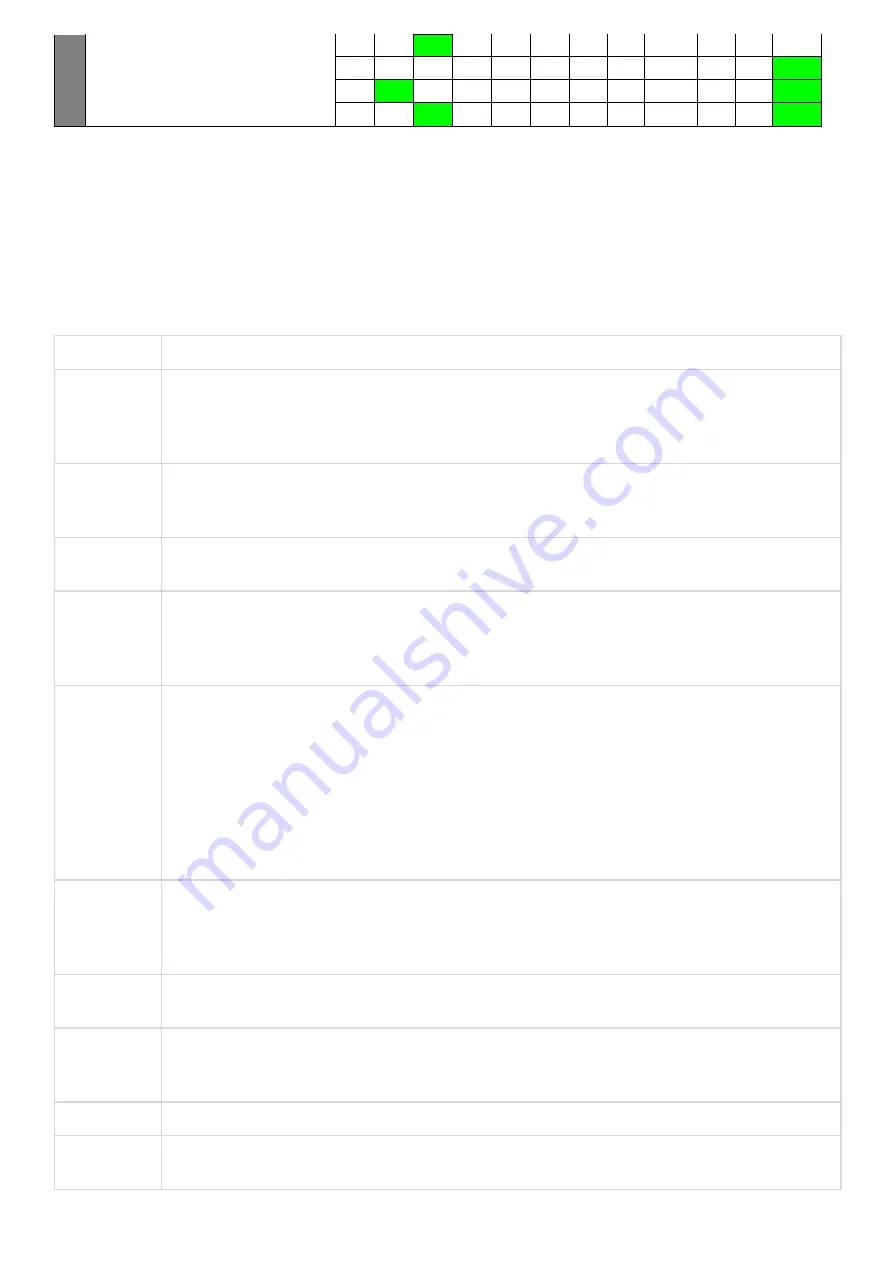
Page | 32
433MHz radio in
SE3, 5V
Bat
Yes
433MHz radio out
SW12
Yes
Relay
SE2
SW12
Yes
Yes
Relay
SE3
SW12
Yes
Yes
All Ai1BUOY models have 22 terminals as described below. The Ai1POLE has a reduced number of terminals, but
with the same port functionality. Some terminal functionality depends on the options selected. The terminals are
5mm spaced allowing wire gauges from 14 to 28 AWG. It is recommended that any wires connected to screw
terminals be secured in bootlace ferrules to prevent wires splaying between terminals, or terminals clamping on
insulation instead of exposed wires. The terminals are suitable for White (0.75mm
2
), Red (1.5mm
2
) and Blue
(2.5mm
2
) ferrules
Table 5 - Internal terminal functionality
Terminal
Description
CHG
This port may be used to provide 16 to 32V inputs to power the Ai1 or charge the batteries. This is
commonly used on EXT PWR models to operate the Ai1 from 24V. The Ai1 has an internal regulator
to regulate this voltage to 12.8V for internal peripherals (and available from the BAT port even if a
battery is not fitted). On solar models, solar power is available via this terminal.
BAT
Continuous Battery voltage is available from this port, which may power external peripherals. This
may also be used for external batteries
IF THE INTERNAL BATTERY IS DISCONNECTED
. The
permissible voltage range for inputs to this port are 10V to 18Vdc.
SW12V
Switched Power Output.
Controlled through program control, able to supply up to 800mA
continuously.
Vx1
Switched adjustable
excitation power
under program control, limited to 50mA (current shared
between both Vx1 and Vx2 ports, see Table 6 below for details of internal sensor options). This port
is limited to 2.5V when powered from USB. The voltage of the excitation port is controlled with a 12-
bit DAC (from +150mV to 5000mV).
Vx2
Switched adjustable
excitation
power
under program control, limited to 50mA (current shared
between both Vx1 and Vx2 excitation ports). This port is also used to provide power to the internal
peripherals which restricts the use of this port (compared to Vx1):
-
The program sets this to 5V when needing to measure internal sensors and may set it back
to 0V at the completion. You need to make sure that any program usage does not stop
internal sensor operation and the internal sensor operation is compatible with external
usage.
-
The internal sensors draw some current which will reduce the 50mA normally available, see
Table 6 below.
C1
Control Port 1
is typically used for SDI12 sensors. If SDI12 sensors are not used this may be used for
other control functions, include RS232 Tx or Rx, a digital output with limited digital drive capacity
(10mA at 3.3V), or a digital input (inputs -10V to +15V). May be used for interrupt triggering in
program control.
C1
Connected to the same C1 port internally, providing another terminal for convenient wiring of
additional SDI12 sensors.
C2
Control Port 2
. A separate control port which may be used as an independent SDI12 port, serial Tx,
serial Rx. Specifications the same as for C1 port. On units with internal GPS, this is connected to C2
although this may be switched to ComRS232 Rx through the use of an internal jumper
G
System
ground
, used for power ground or analog reference
PSW
Pulse Input, switch counting
. Counts switch closures such as on tipping bucket rain gauges, security
switches, relay contacts or wind sensors. Allows ±17.5V input voltage, 3mS pulse counting to 150Hz

